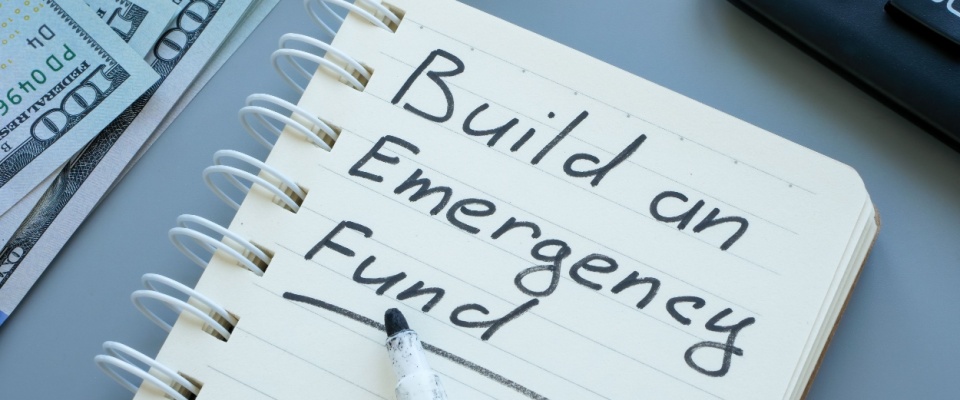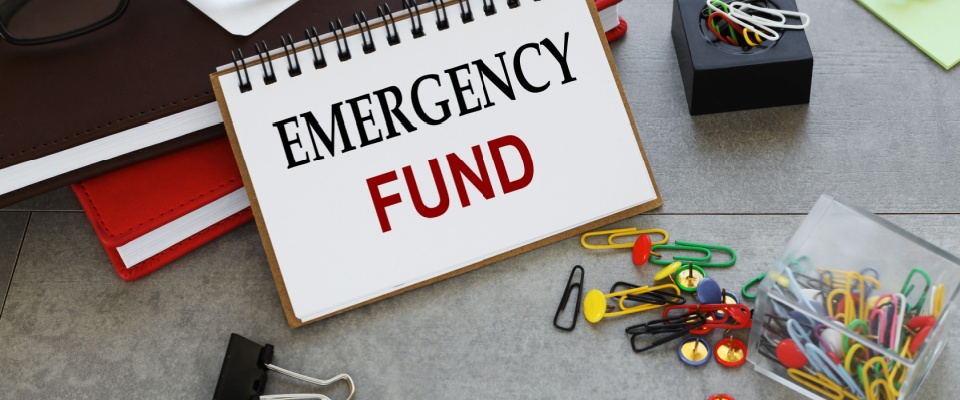Share this article:
You’ve finally taken the plunge and rented your own place. No more unsolicited advice about cleaning your room or explaining why pizza counts as breakfast. But before you dive headfirst into the world of decorative throw pillows and trendy houseplants, there’s something crucial you need to set up: an emergency fund plan.
Sure, saving money doesn’t sound as fun as picking out furniture or planning your housewarming party. But trust us, an emergency fund plan is your secret weapon against unexpected expenses!
So, let’s explore what an emergency fund plan is, why it’s especially important for first-time renters, and how you can set one up without feeling like you’re living on instant noodles.
What is an emergency fund plan?
An emergency fund plan is essentially an amount of money set aside to cover unexpected expenses. Think of it as the financial equivalent of that spare tire in your trunk — you hope you never need it, but boy, are you glad it’s there when things go sideways!

For first-time renters, an emergency fund plan is particularly important because you’re now dealing with a new range of unpredictable expenses. Leaky faucets, broken appliances, or surprise utility bills can hit when you least expect them. And let’s not forget about life’s curveballs like medical emergencies or sudden job changes.
Why first-time renters need an emergency fund plan
Ah, the joys of renting! It’s all fun and games until something breaks. Unlike living with family or roommates, as a first-time renter, you’re responsible for many unexpected expenses. Here’s why an emergency fund plan is your best friend:
- Surprise repairs and maintenance
While your landlord might handle major repairs, minor ones are often your responsibility. A clogged drain or broken light fixture might not sound expensive — but the repair bill can quickly add up. An emergency fund plan cushions these unexpected costs, so you’re not scrambling to borrow money or, worse, ignoring the problem until it gets worse. - Unplanned moving costs
Sometimes life throws you a curveball, and you might need to move unexpectedly — maybe your landlord decides to sell the property, or you have a noisy neighbor who moonlights as an amateur DJ. Whatever the reason, moving means added costs. Having an emergency fund plan means you won’t be couch-surfing or maxing out your credit cards just to secure a new place. - Job instability
Let’s face it — some jobs aren’t as secure as others. If you suddenly find yourself without a paycheck, an emergency fund plan buys you time to find a new gig without stressing about next month’s rent and even other essential expenses.

How much should you save for an emergency fund?
Good question! The general rule of thumb is to save at least three to six months’ worth of living expenses. But if that sounds as realistic as adopting a pet unicorn, don’t worry — you can always start small. Even having one month’s rent saved can make a big difference.
Here’s how to calculate your target emergency fund:
- Add up your essential expenses: Rent, utilities, groceries, transportation, and any other non-negotiable bills.
- Multiply by the number of months you want to cover: Start with one month as your initial goal, then gradually build to three or six months.
For example, if your monthly expenses add up to $2,000, aim for an emergency fund plan of at least $2,000 to start with, eventually working up to $6,000 or more.

Setting up your emergency fund plan without going broke
Saving money might sound like a buzzkill, but it doesn’t mean you have to live like a hermit. Here are some practical tips for setting up your emergency fund plan without sacrificing all the fun:
- Automate your savings
Set up automatic transfers to a dedicated savings account every payday. It doesn’t have to be a huge amount — even $50 a month adds up over time. The key is consistency. Out of sight, out of mind! - Cut back (but just a little)
You don’t have to give up your morning latte, but maybe skip the overpriced sweet treat once in a while. Small changes can make a big impact on your emergency fund plan. - Side hustle your way to savings
Got a talent for dog-walking, graphic design, or selling handmade crafts? A little extra income can go directly into your emergency fund plan, boosting it faster than relying on your regular paycheck alone. - Stash unexpected cash
Got a tax refund, birthday money, or a bonus at work? Pretend you never saw it and put it straight into your emergency fund plan. Think of it as a gift to your future self!
Where to keep your emergency fund
An emergency fund isn’t meant to grow through risky investments. It needs to be easily accessible but not so easily that you’re tempted to “borrow” from it for non-emergencies.
- High-yield savings account: This is your best bet. It’s safe, earns some interest, and you can access it when needed without penalties.
- Money market account: Similar to a savings account but may offer higher interest rates.
- Avoid using a checking account: It’s too tempting to dip into it for everyday expenses. Keep your emergency fund plan separate to resist temptation.

When to use your emergency fund
The golden rule is to only use your emergency fund for real emergencies. If you’re questioning whether it’s an emergency, it probably isn’t.
- Yes: Car repairs, medical bills, emergency travel, or unexpected job loss.
- No: Concert tickets, holiday shopping, or a spontaneous weekend getaway.
If you do need to dip into it, make a plan to replenish the funds as soon as possible. That’s the great thing about having an emergency fund plan — it’s there when you need it, and you can rebuild it when life gets back on track.
Setting up an emergency fund plan as a first-time renter might not be the most glamorous task, but it’s one of the smartest financial moves you can make. It protects you from the unexpected and gives you peace of mind knowing that a minor emergency won’t turn into a major financial crisis.
Share this article:
Adina Dragos is a real estate writer and research analyst with RentCafe. She has solid experience in real estate writing, covering topics ranging from best cities for renters and the top cities for rental activity to cost of living. Her work was featured in several prominent media channels such as Axios, The Dallas Morning News, ConnectCre and The New York Times.
The Ready Renter has your back
Tips, news, and research curated for renters, straight to your inbox.




Related posts
Subscribe to
The Ready Renter newsletter







